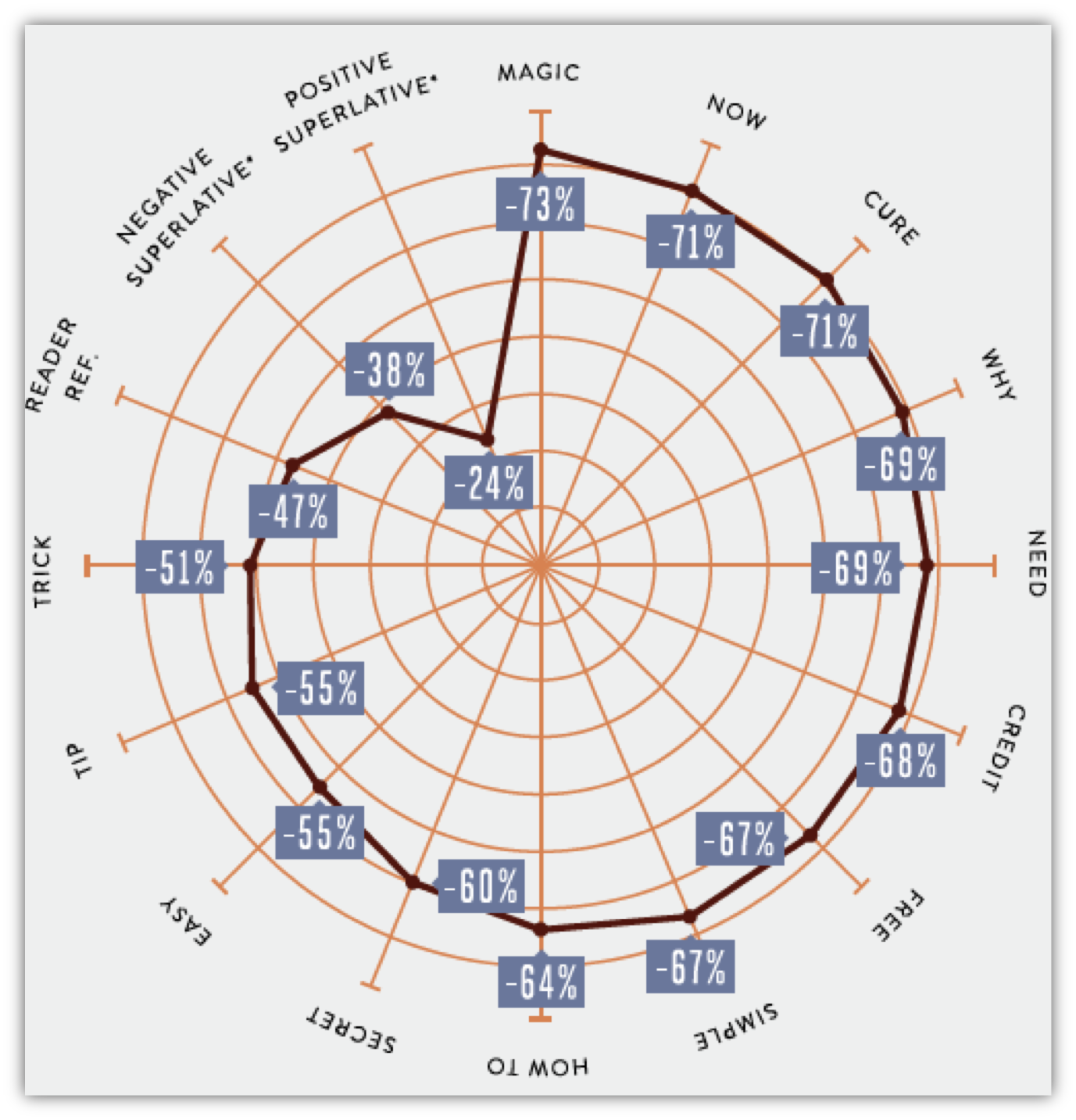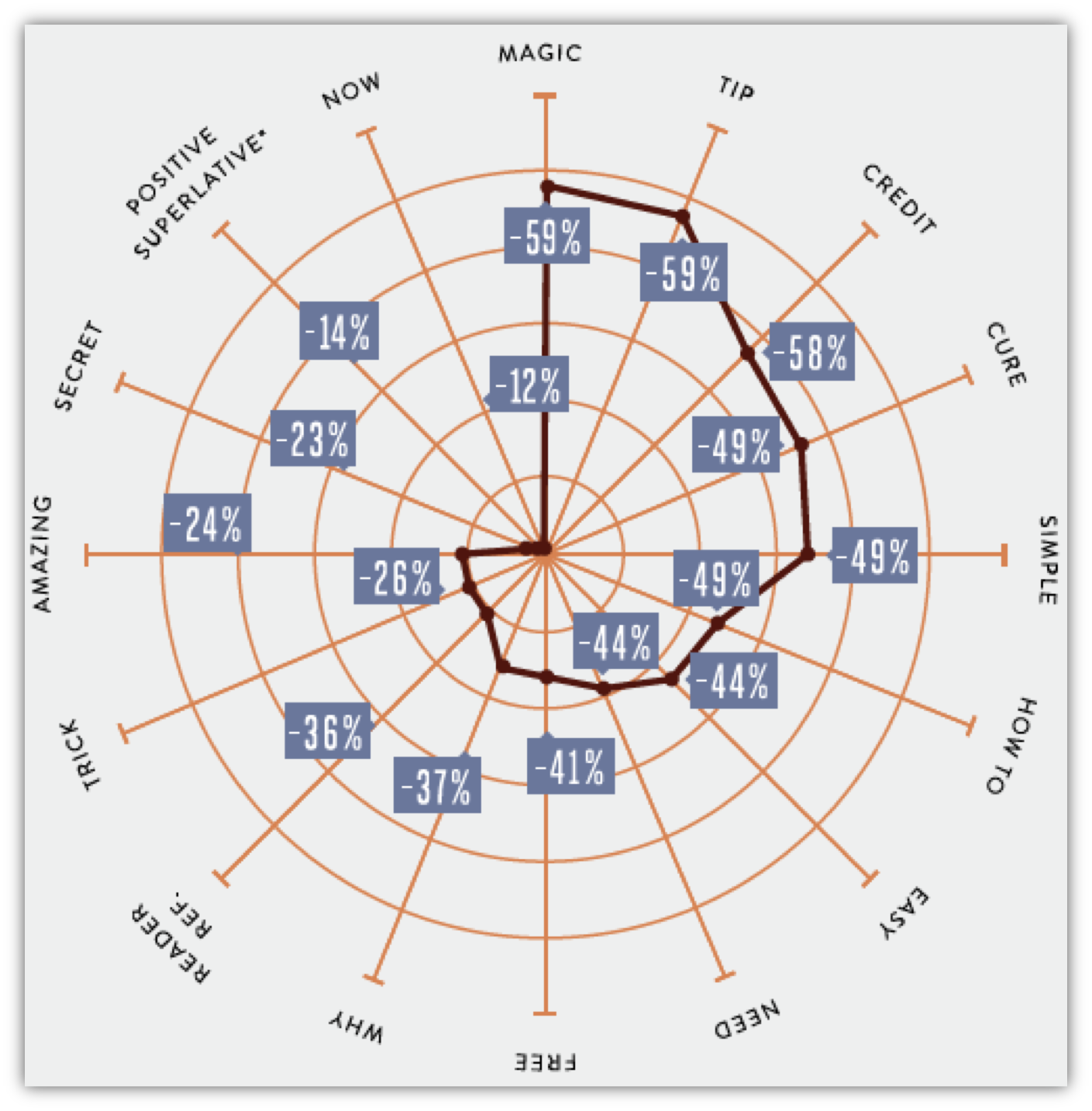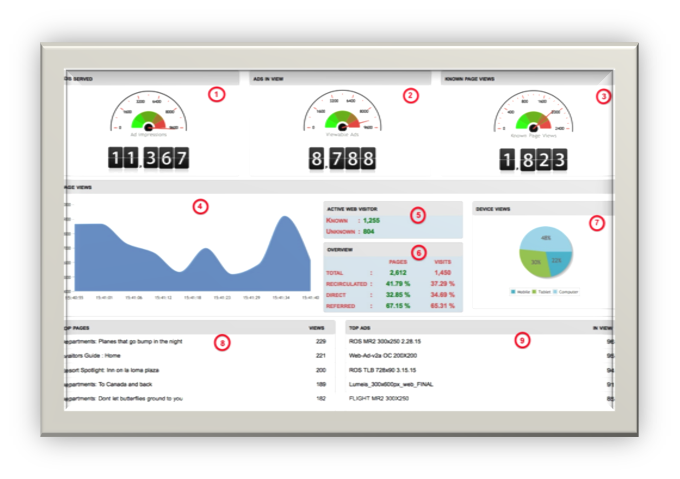Demystifying Analytics for Editors and Publishers: Headlines and Words
Part 3 in a 3 Part Series
In the last post of this 3-blog post series on Demystifying Analytics, I am going to cover how you can use analytics to measure the past performance and predict the future performance and related behaviors of your headlines. This form of insight goes beyond simple A/B testing of headlines and word choices and gives you historical and future information to aid your choices and decision-making.
Have you struggled as an editor with word choices for a headline? How much stress did you experience the night before a print publication went to the printer? Were you still debating if you made the right editorial decisions?
Digital analytics can shed light on the effectiveness of your word choices in the past, current and help you predict the future. Remember, with digital analytics, you are now tracking users coming to your content, how they interact with it and if they found it interesting enough to share.
So, what made them click on that link to come to your story? Was it the word choices used for the headline? Well, you can now look at the analytic reports and derive that information over time by matching use, behaviors, clicks and more.
How can it help you? For one, it can help you understand what words may be having an effect or what words may be losing their effect. We humans adapt quickly. What we reacted to yesterday may not hold the same allure today or tomorrow.
One of the most fascinating things to me is the study of human behaviors and factors particularly in the context of digital, devices and consumption of information. Technology and the connectivity we now have to “Google” any information or question we have in the moment is all new, however, our human nature, thought processes and behaviors aren’t. They are simply being used and exercised within a new medium. One of my favorite books is by Robert Cialdini: Influence, The Psychology of Persuasion. I encourage everyone to read his work to gain insight and understanding of how we really OPERATE in today’s world.
 Also of importance is how we listen. I often am out speaking on the topic of “Active Listening”particularly in how organizations need to adapt in a multi-channel world and change how they are listening to those around them, specifically, their customers and constituents. Our ways of “listening” are programmed like any other behaviors. Years and years of genetic pre-programmed responses to stimuli. You may think wow, what is he talking about here. Well, I bring this forth because it is critically important to understand the human behavior impact on your choices and decision-making. You are publishing content you want people to read. You need to understand the past behaviors and thought processes and be able to predict their future behaviors and thought processes. Some would say this is more art than science. I would say this is more science than art (particularly if you read Cialdini’s books). Here is where data and analytics become important. The data and analytics at your finger tips can give you the “science”.
Also of importance is how we listen. I often am out speaking on the topic of “Active Listening”particularly in how organizations need to adapt in a multi-channel world and change how they are listening to those around them, specifically, their customers and constituents. Our ways of “listening” are programmed like any other behaviors. Years and years of genetic pre-programmed responses to stimuli. You may think wow, what is he talking about here. Well, I bring this forth because it is critically important to understand the human behavior impact on your choices and decision-making. You are publishing content you want people to read. You need to understand the past behaviors and thought processes and be able to predict their future behaviors and thought processes. Some would say this is more art than science. I would say this is more science than art (particularly if you read Cialdini’s books). Here is where data and analytics become important. The data and analytics at your finger tips can give you the “science”.
The following two graphics are contained within the “Data Driven Strategies for Writing Effective Headlines” report from Hubspot and OutBrain. Although the results stem from the content distributed and offered by Hubspot, it provides insight into how you can measure you own headline word choices in the content you publish. You have the data and can correlate “clickability” across content and word usage to determine effectiveness.
In these examples, you will see that certain words do not have the intended effect. The use of the individual words “Free”, “You”, “Must” and “Magic” as examples don’t result in capturing attention of targeted readers. The most interesting result is that the words “Picture” “Image” and “Infographic” perform very well. It may also show you that your readers are looking for visuals to share via twitter, Facebook or other social networks.
Some general findings of interest
Headlines with language that created a sense of urgency (need, now, must)(12%) generated lower CTR (Click Thru Rates) than those that didn’t use such pushy language (42%).
Another general finding: headlines with the words “Free”, “Cure”, “Secret”, “Amazing” generated a 59% lower CTR than headlines that didn’t include those words.
Back to human adaptability
What does this help us see?
Everyone gets a significant amount of email everyday. They may have clicked on a few links provided in emails before but didn’t find the content, story or information they thought they were going to get. The word choices may have attempted to bait, got the click, but left the user scratching their head as to the value.
As we learn and experience the World, we adapt. What worked yesterday isn’t going to work today. In addition to adapting, we also learn. Remember the saying “fool me once..shame on you…fool me twice…shame on me. The second “fool me” leaves a negative feeling with the user, the first “fool me” was probably shrugged off. We humans don’t seek to have negative feelings. We will avoid a situation or feeling that is negative or uncomfortable.
To avoid this scenario, it is important to monitor your choices, set yourself apart from those using different tactics to get the “click”because if you don’t, your audience, your readers, will learn. The education you are providing will result in negative thoughts and have unintended consequences.
On a positive note, you can use the treasure trove of data to make adjustments to your content headlines and even placement. Take a dive into data and see how your headline and word choices are resonating.
In the first post of this series I discussed how digital content is living and breathing. Just because a piece of content was published last year doesn’t mean it is no longer relevant. Experiment, pick a few pieces of content from your archive, change the headline or even the summary reflecting terms that are currently resonating with your readers and watch the magic happen. I would make an educated guess that the activity around the content will increase and perhaps even exceed your expectations.
Aside: A deep repository of data is available to understand your human readers, what drove them to you in the past, in the present and how they may drive to you in the future.
Practical Recommendation
You as an editor, author or publisher didn’t readily have this information available at your fingertips and in real time. Formerly, extensive user groups and surveys had to be put in place at a significant cost. What you wanted to learn had to be prioritized.
So, how do you do this yourself? And more importantly what are the questions you need to ask the audience development or digital staff to provide to you?
Another Aside: The insight resulting from real time data can help you plan and adapt. The result (knowing and taking action) can help you increase readership, it can extend the reach of your content to new readers (or subscribers) and ultimately result in an increase in revenue.
You can do this yourself by accessing a few reports or dashboards. The first step is to find content (story) by story content performance over the past year. This report will provide the page, sessions, time on page, and the way the user got to the content (remember the Click Stream from the first post). The Click (CTR) could have come from an email, website aggregator, your own home page or some other referrer. Most reports allow you to easily “sort” to bring like referrers and elements together. You can then review the Word choices against the CTR or performance. Now you could take a lot of time to sort and try to figure this out manually. My suggestion: seek out the staff and ask the following questions or specify what you need:
 “I need a report that matches CTR on each story over the past year. I would like you to correlate those results and include the headlines from each story. Can you share with me how each story performed as a result of the headline?
“I need a report that matches CTR on each story over the past year. I would like you to correlate those results and include the headlines from each story. Can you share with me how each story performed as a result of the headline?
You may get one of two reactions. One being “really” stated with fear. More than likely however, you will have given the AD or Digital staff some meat to play with. Those who are working in analytics everyday, love new challenges. They know the value of the information and want to have others see that value as well. Perhaps it takes a week or two to set up in an automated way but you then have it to always use.
The exercise surrounds taking objective data layered with subjective data to produce the “story” and results. The challenge is correlating those findings against your known audience and user behaviors and preferences. Perhaps now you see why I mentioned human behaviors and active listening. You don’t need to be an expert in those topics but knowing enough to be dangerous can help you see the patterns and trends in the data and analytics.
Education and knowledge is power.
The education and knowledge to know what is being consumed, amplified, shared and engaged with.
The education and knowledge to ask the right questions.
The education and knowledge of how to apply the analytical findings.
If you reached this point, thank you for taking the journey with me. I hope that what I have shared has helped demystify data and analytics and provided some practical and useful ways to use the treasure trove of information at your fingertips.
If you or your organization needs help in any of these areas, please give me a call or drop me an email.
I relish the opportunity to work with organizations to help them understand analytics and aid in prioritizing what is most important for your content and increasing your relevance in a noisy world.
And lastly and as always, let me know your comments and questions.







This Post Has 0 Comments